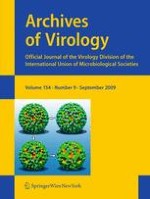Published in:

01-09-2009 | Original Article
An improved reverse transcription loop-mediated isothermal amplification assay for sensitive and specific detection of Newcastle disease virus
Authors:
Qiang Li, Chunyi Xue, Jianping Qin, Qingfeng Zhou, Feng Chen, Yingzuo Bi, Yongchang Cao
Published in:
Archives of Virology
|
Issue 9/2009
Login to get access
Abstract
Five of 21 different Newcastle disease virus (NDV) strains isolated from China in 2007 gave false-negative results when detected with a previously reported loop-mediated isothermal amplification (LAMP) method, and mismatches were found between the target gene and LAMP primers. Therefore, an improved, sensitive, specific, and accelerated one-step reverse transcription (RT)-LAMP assay with degenerate primers was developed. Our data demonstrated that the improved RT-LAMP assay detected all 21 NDV isolates, had no cross-reaction with three other avian viruses, could be performed in 50 min less time, was 5-fold more sensitive than the previous LAMP assay, and achieved 96.8% sensitivity with 62 samples, including 30 field clinical samples, 24 experimentally infected samples, and 8 experimentally negative samples. Therefore, the improved RT-LAMP assay is a simple, rapid, and cost-effective method that is practical for less well-equipped laboratories and in the field.